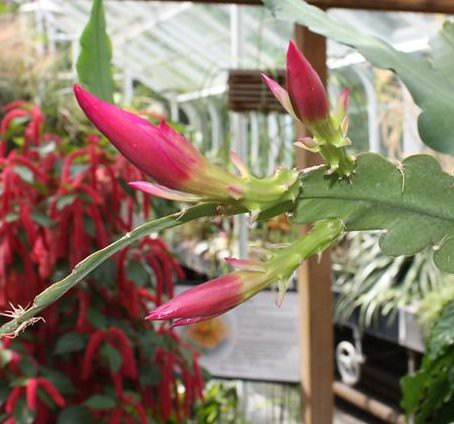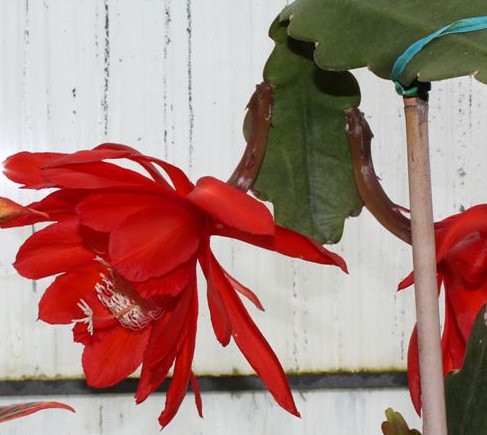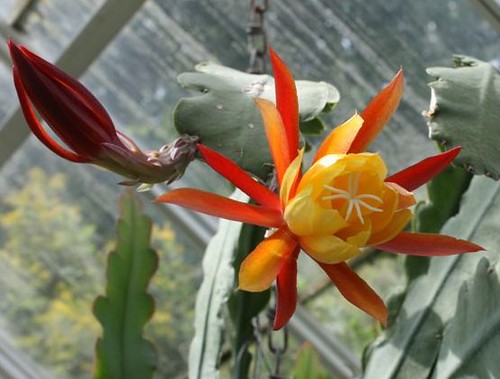Epiphyllum is the genus commonly called "Orchid Cactus." That common name comes from the appearance of the plant when not blooming (cactus-like) and the beautiful flowers (not really orchid-like, but very pretty). This genus of about 20 species is in the Cactaceae family, so it truly is a cactus. It is found in Central America.
The plant itself has a growth habit similar to my Stapelia, with long, lanky stems - which I guess are technically the leaves of a cactus. Epiphyllums also bloom from the end of long cascading stems. However, the stems of the Stapelia have more bulk to them, whereas Epiphyllums are slender with a central vein that is a little thicker. But this plant is not grown for its green stems. It is grown for it's beautiful blooms. Take a look!
 |
| Peach Epiphyllum bloom |
 |
| Epiphyllum buds |
One of the most widely recognized Epiphyllums has a pure white bloom and has some spidery petals. It is called Queen of the Night and is supposed to bloom primarily during the dark house. Epiphyllum blooms are very short-lived (just one day), so we were very lucky to see a couple dozen blooms of different colors at the Volunteer Park Conservatory in Seattle.
 |
| Red Epiphyllum bloom |
Like the Fuschias, many of the Epiphyllums on display were colorful hybrids, which are commonly kept as houseplants. From what I've read, this genus is a pretty easy houseplant. It has the inherent trait of other cacti, being drought hardy, while also growing well in part shade.
 |
| If I was naming this plant, I would call it Epiphyllum 'Sunburst'. |
 |
| My beautiful wife, Christie, posing with a cascade of pink Epiphyllum blooms |
Next time I have a chance to buy an affordable Epiphyllum, I'll be happy to take one home!





Another unique plant with a beautiful bloom....and a very pretty picture of Christie! :-)
ReplyDeleteI'll be happy to send you some cuttings....just let me know if you are still interested. Check my epi blog to see what varieties you like the best.
ReplyDelete